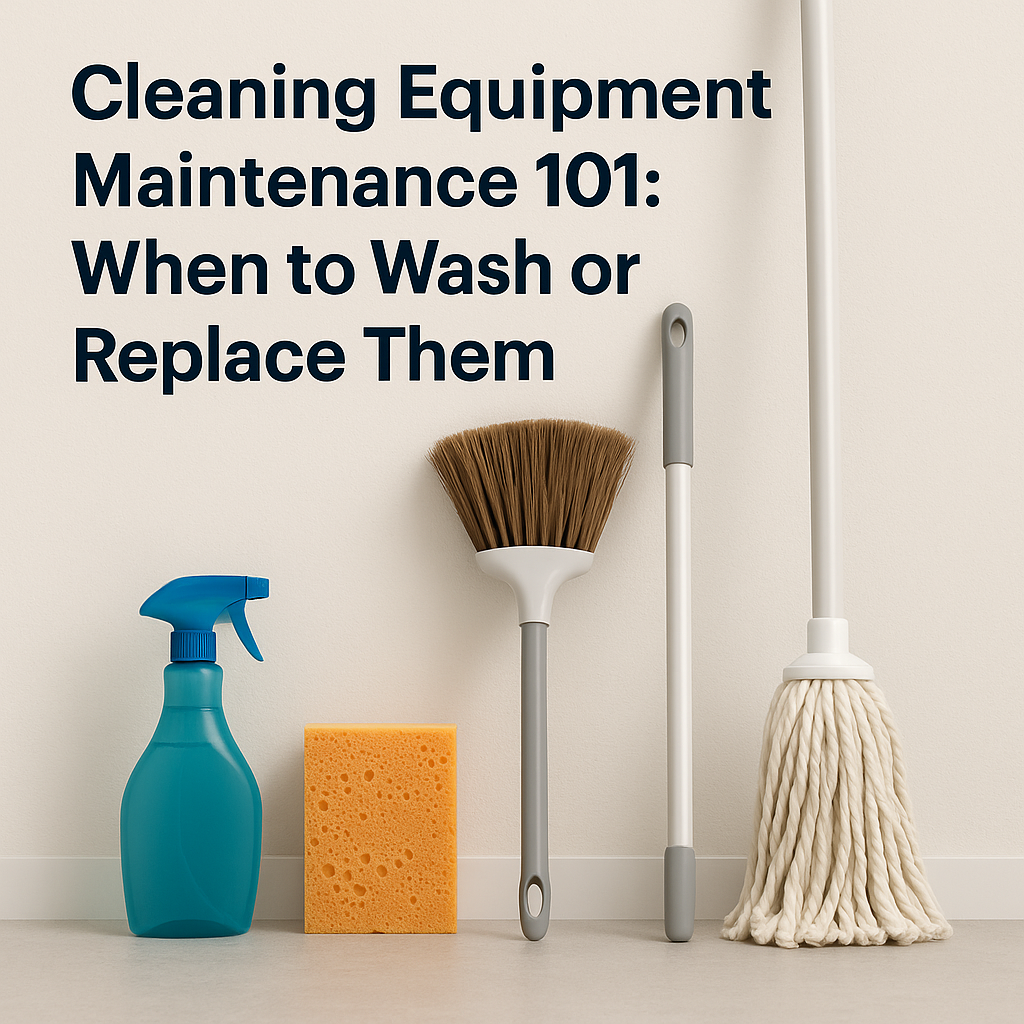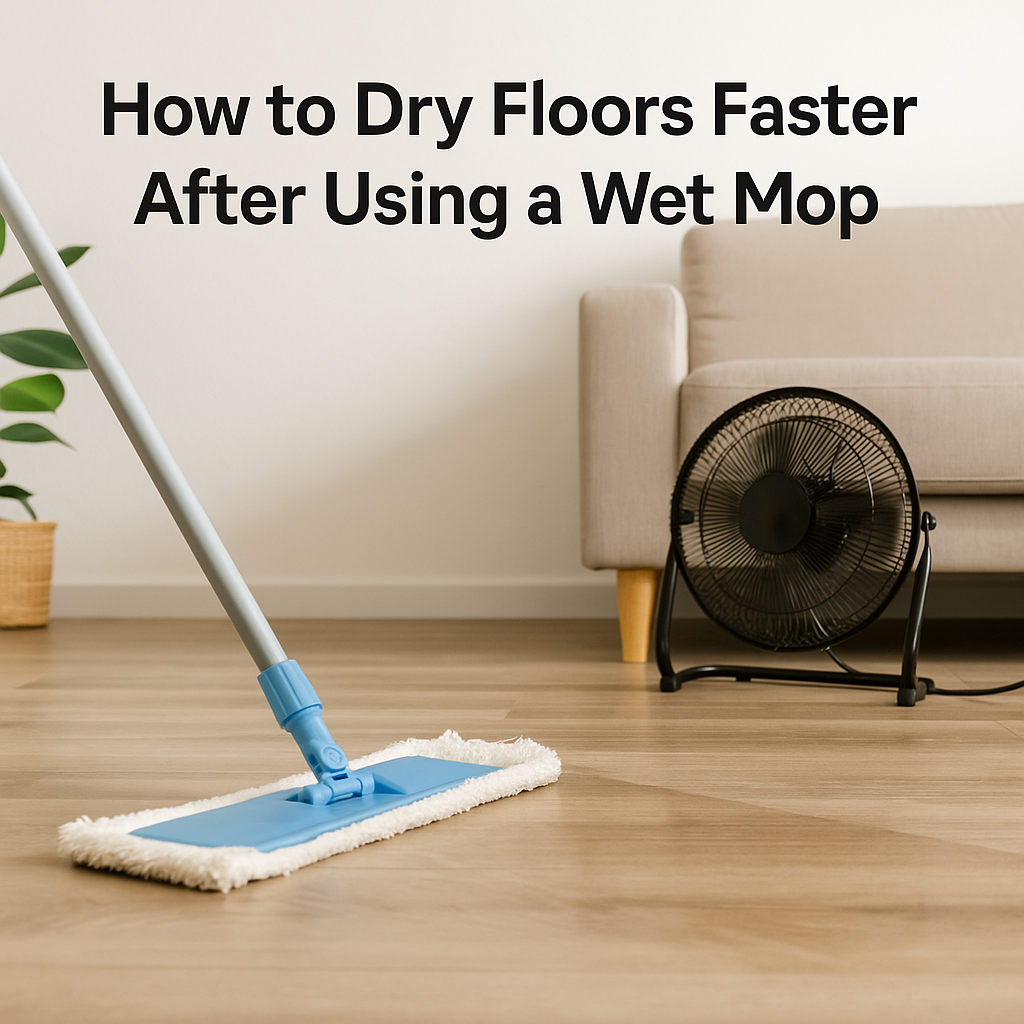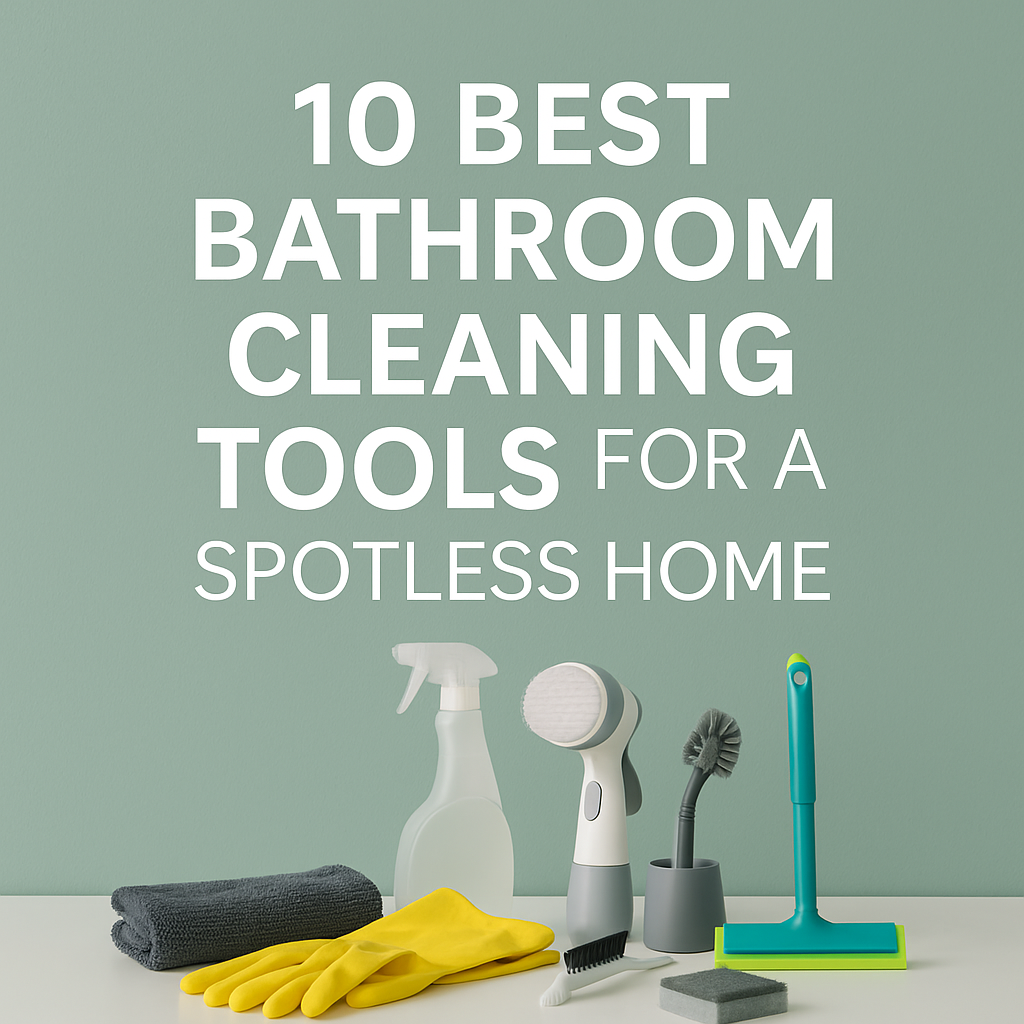Fighting dirt with dirty tools doesn’t make sense—but it happens more than we realize. A lot of homes and even offices use the same old mops, cloths, and brushes for weeks without a second thought. Over time, these tools pick up grime, germs, and dust. If they’re not cleaned or replaced regularly, they stop doing their job, and can even spread their bacteria at your place. So instead of doing what it’s supposed to do, it’s doing the complete opposite.
Letting your tools wear out not only makes cleaning harder, it also wastes your time and affects your hygiene. Cleaning equipment maintenance isn’t difficult once you know the basics. In this blog, we’ll guide you on how often to clean or replace your everyday tools, how to clean them the right way, and share a few simple rules that every home can follow.
Why Cleaning Equipment Maintenance Matters
Cleaning tools are made to remove dirt, but they absorb some of it too. A dirty mop won’t clean floors properly. A worn-out broom misses debris. And an old sponge might just be spreading bacteria instead of wiping it away. Taking care of your tools makes them last longer and work better.
On top of that, poor care can damage your tools. Mops that stay wet start to smell. Brushes that don’t get rinsed out properly become stiff and brittle. Even vacuums can lose power if filters aren’t cleaned. The truth is, if you want a cleaner space, start by keeping your cleaning equipment clean.
How Often Should You Clean or Replace Your Equipment?
Let’s look at how to take care of your most-used tools:
Microfiber Cloths
Wash: After every big cleaning session or at least 2–3 times a week. This keeps the cloth effective and free from buildup. Use warm water with gentle detergent. You can add some vinegar (10%) to make your cloth soft. Don’t use fabric softener—it blocks the tiny fibers that make the cloth so good at grabbing dirt. Also, avoid hot water or high dryer heat, as it can damage the cloth and reduce its lifespan.
Replace: After around 100–150 washes. If the fabric starts to feel thin, rough, or stops picking up dust, it’s time to get a new one.
Sponges
Wash: Clean them daily with hot water and dish soap. You can microwave a damp sponge for a minute or soak it in vinegar to kill germs. It’s best to use separate sponges for dishes and countertops.
Replace: Every 1–2 weeks, or sooner if it smells or starts to fall apart.
Brooms & Brushes
Wash: Once a month. Soak the bristles in warm soapy water, rinse thoroughly, and let them dry completely. Don’t use very hot water, as it can weaken the bristles.
Replace: Every 6 to 12 months, depending on wear. If the bristles are bent or falling out, it’s time for a replacement.
Mops
Wash: Rinse and clean your mop after every use. Soak the head in warm soapy water or a disinfectant solution. Always let it air dry—never leave it sitting in water.
Replace: Every 3–6 months. If it smells even after cleaning or leaves streaks on the floor, it’s due for a replacement.
Vacuum Cleaners
Clean Filters: At least once a month. Wash reusable filters with water and let them dry completely.
Replace Filters: Every 3–6 months, based on how often you vacuum. Dirty filters affect suction.
Replace Belts or Brushes: Check them once a year. If they’re worn or tangled with hair, it’s time to change them.
The 7 General Rules of Cleaning Equipment Maintenance
-
Always clean after use. You don’t want to let that dirt stick to your equipment, else it can get harder to remove and may also damage your tool
-
Dry everything properly. Tools that stay wet too long can grow mold or bacteria.
-
Store them the right way. Hanging mops and upright brooms last longer and keep their shape.
-
Use the right tool for the job. Don’t cross-contaminate between toilet and kitchen areas.
-
Label tools if needed. This is helpful in busy households or shared spaces.
-
Inspect regularly. Check for bent parts, bad smells, or signs of wear.
-
Don’t delay replacements. Worn tools clean poorly and take twice the effort.
Signs It’s Time to Replace
You don’t always need a timer or reminder. Here are some clear signs:
-
Your microfiber cloth feels rough or doesn’t clean as well.
-
Sponges still smell bad after washing.
-
Mop heads leave behind streaks or stay damp and smelly.
-
Broom bristles are bent or shedding.
-
The vacuum feels weak even after cleaning the filter.
-
Spray bottles are leaking or not spraying properly.
- Any cleaning tool looks permanently dirty or worn out.









